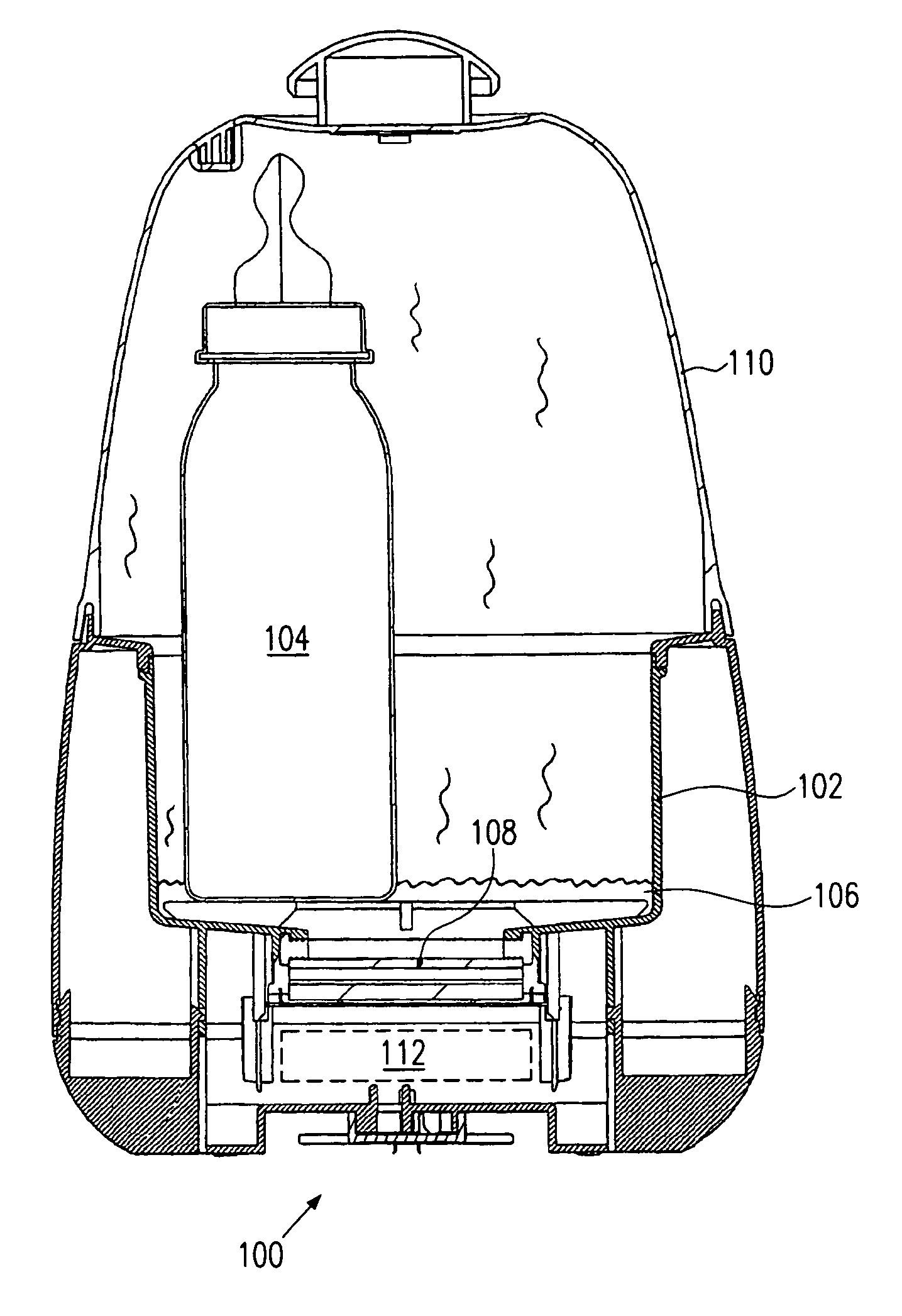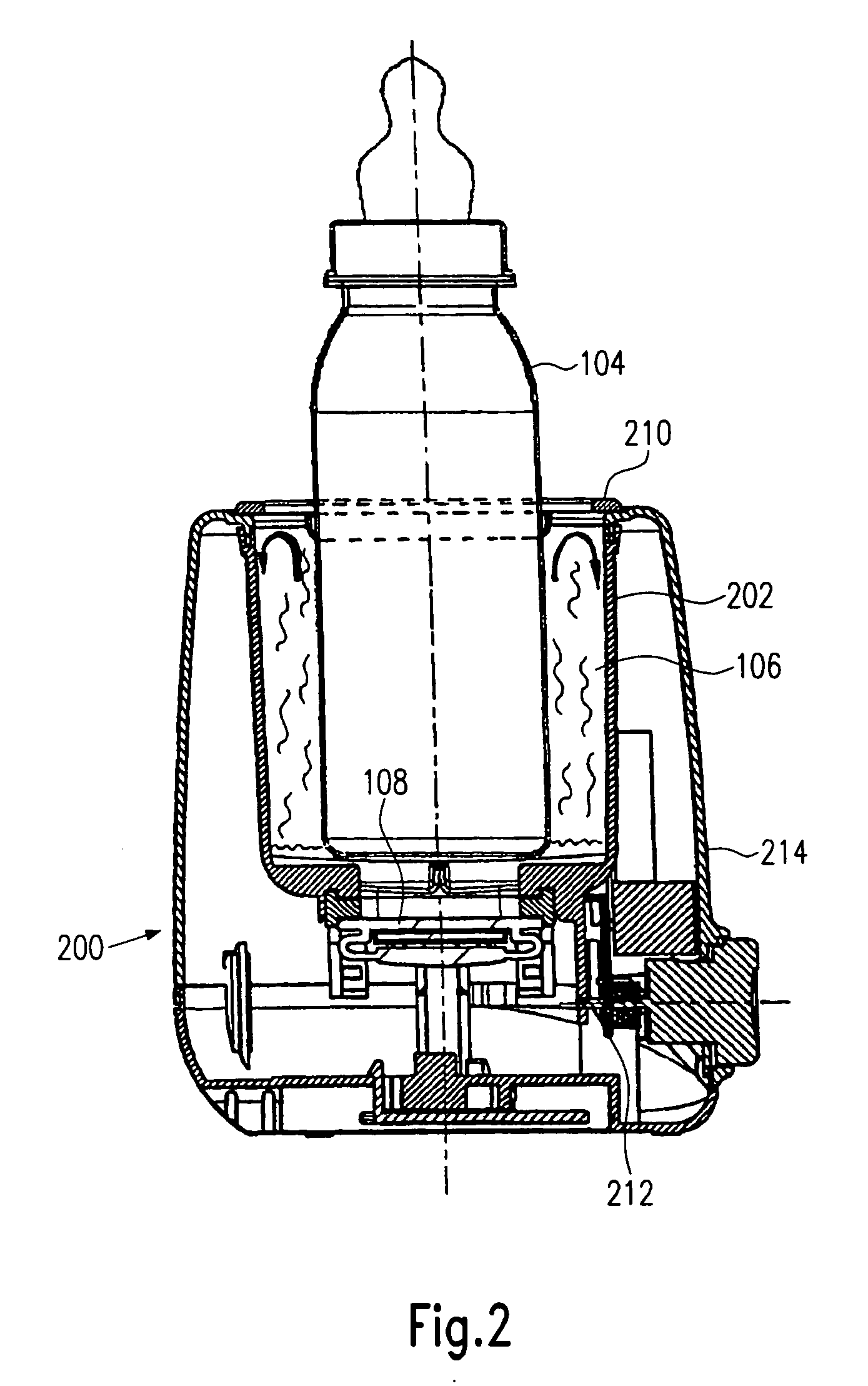Electric warmer with a current sensor
a current sensor and electric heater technology, applied in the field of electric warmers, can solve the problems of unnecessary supply of heating power, insufficient accuracy of filling, and significant safety drawbacks, and achieve the effect of low cos
- Summary
- Abstract
- Description
- Claims
- Application Information
AI Technical Summary
Benefits of technology
Problems solved by technology
Method used
Image
Examples
Embodiment Construction
[0014] The illustrated embodiments of the present invention will be described with reference to the figure drawings wherein like elements and structures are indicated by like reference numbers.
[0015] Referring now to the drawings and in particular to FIG. 1, a schematic illustration of an electric sterilizer 100 is shown in the operative state with an inserted baby bottle. The electric warmer comprises a jar 102 into which the container 104 to be heated, here e.g. a baby bottle, can be inserted. The jar 102 is filled with the heat transfer medium 106, here water, and a PTC resistor heating element 108 which is in thermal contact with water 106 can be fed with electrical energy for heating up the water. When the PTC resistor heating element 108 is heated, water 106 will heat up and start to evaporate.
[0016] To produce a closed vapor atmosphere for sterilizing the container 104, the jar is closed with a cover 110. Power supply is controlled with the help of the schematically outline...
PUM
 Login to View More
Login to View More Abstract
Description
Claims
Application Information
 Login to View More
Login to View More - R&D
- Intellectual Property
- Life Sciences
- Materials
- Tech Scout
- Unparalleled Data Quality
- Higher Quality Content
- 60% Fewer Hallucinations
Browse by: Latest US Patents, China's latest patents, Technical Efficacy Thesaurus, Application Domain, Technology Topic, Popular Technical Reports.
© 2025 PatSnap. All rights reserved.Legal|Privacy policy|Modern Slavery Act Transparency Statement|Sitemap|About US| Contact US: help@patsnap.com



